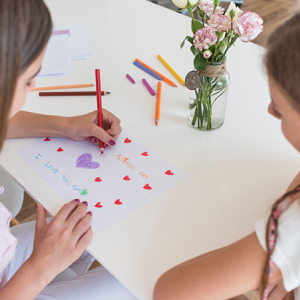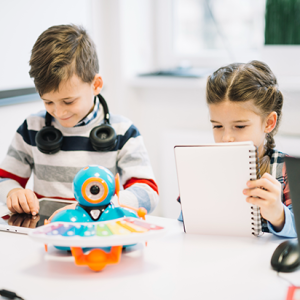
How an Art Book Can Benefit the Development of Kids’ Motor Skills
It is a long established fact that a reader will be distracted by the readable content of a page when looking at its layout. The point of using Lorem Ipsum is that it has a more-or-less normal distribution of letters, as opposed to using ‘Content here, content here’, making it look like readable English. Many desktop publishing packages and web page editors now use Lorem Ipsum as their default model text, and a search for ‘lorem ipsum’ will uncover many web sites still in their infancy. Various versions have evolved over the years, sometimes by accident, sometimes on purpose (injected humour and the like).
It is a long established fact that a reader will be distracted by the readable content of a page when looking at its layout. The point of using Lorem Ipsum is that it has a more-or-less normal distribution of letters, as opposed to using ‘Content here, content here’, making it look like readable English. Many desktop publishing packages and web page editors now use Lorem Ipsum as their default model text, and a search for ‘lorem ipsum’ will uncover many web sites still in their infancy. Various versions have evolved over the years, sometimes by accident, sometimes on purpose (injected humour and the like).
There are many variations of passages of Lorem Ipsum available, but the majority have suffered alteration in some form, by injected humour, or randomised words which don’t look even slightly believable. If you are going to use a passage of Lorem Ipsum, you need to be sure there isn’t anything embarrassing hidden in the middle of text. All the Lorem Ipsum generators on the Internet tend to repeat predefined chunks as necessary, making this the first true generator on the Internet. It uses a dictionary of over 200 Latin words, combined with a handful of model sentence structures, to generate Lorem Ipsum which looks reasonable. The generated Lorem Ipsum is therefore always free from repetition, injected humour, or non-characteristic words etc.
Art is a wonderful tool for fostering creativity, self-expression, and critical thinking. However, there’s another benefit to art that often goes unnoticed—its positive impact on a child’s motor skills. The physical movements involved in drawing, coloring, and shaping objects contribute significantly to the development of both fine and gross motor skills. Fine motor skills—those that involve small, precise movements—are especially crucial for tasks like writing, drawing, and grasping objects, while gross motor skills—larger body movements—are essential for physical coordination and strength.
Ellie Christine Patton, a dedicated creator of beginner-friendly art books, has designed a workbook specifically to help children develop both motor skills and artistic abilities. Her book, How To Draw: Workbook for Young Artists, is an approachable guide that introduces kids to the fundamentals of drawing in a fun, playful way. By encouraging kids to create adorable cartoon-style animals and objects, this workbook doesn’t just build creativity—it also nurtures essential motor skills that children will use throughout their lives. Let’s explore how this book, in particular, helps children develop their motor skills while they explore their creativity.
Enhancing Fine Motor Skills with Step-by-Step Drawing Lessons
One of the core components of How To Draw: Workbook for Young Artists is its step-by-step approach to teaching children how to draw simple shapes and characters. Each lesson breaks down complex images into easy-to-follow steps, making it simple for kids to begin with basic lines and progress to more detailed shapes. This process is crucial for developing fine motor skills because it encourages children to use drawing tools like pencils or crayons in specific, controlled ways.
For example, when a child is asked to draw a cute cartoon animal, they must use their hand, fingers, and wrist to create smooth lines and shapes. The act of holding the pencil or crayon, guiding it across the page, and carefully following the instructions strengthens hand-eye coordination and helps develop precise movements. Whether they are tracing basic shapes or coloring inside the lines, children practice critical hand movements that improve their ability to hold and control a writing instrument.
As children progress through the workbook, they begin to master more complex shapes and objects. By tracing and drawing multiple iterations of the same shape or character, they develop muscle memory, improving their ability to perform similar tasks in other areas, like writing or cutting with scissors.
Encouraging Repetition and Refinement
One of the most effective ways to enhance motor skills is through repetition. In the case of drawing, repetition helps children practice making the same movements over and over again, which strengthens their motor control. Each time a child draws a line, shapes a figure, or colors an image, they reinforce the muscle movements necessary for developing fine motor skills.
Patton’s workbook encourages this type of repetition by having children trace shapes, draw objects from different angles, and recreate simple designs multiple times. This constant practice not only helps children build muscle memory but also allows them to see their progress. As they refine their ability to draw and follow the steps, their confidence grows, and so does their motor control.
For instance, as children learn to draw a cute animal, they’ll likely repeat the process of outlining, detailing, and coloring. With each attempt, their hand movements become more fluid and controlled. This repetition is key in helping children develop precision and mastery over their fine motor skills.
Creativity and Confidence Boost through Art
An essential part of How To Draw: Workbook for Young Artists is its emphasis on creativity and self-expression. The book is designed to be lighthearted and playful, making the drawing process fun rather than intimidating. Children are encouraged to personalize their drawings, adding their own imaginative touches to the basic instructions. This freedom to explore creativity not only makes the learning process enjoyable but also fosters a sense of accomplishment.
When kids see their drawings come to life and realize they can create something beautiful with their own hands, it boosts their self-confidence. This positive experience encourages them to continue exploring new techniques, further honing their motor skills in the process. As they draw more and experiment with their creations, they also develop problem-solving abilities, which are valuable skills in all aspects of life.
In Patton’s workbook, every page is designed to inspire joy and satisfaction. Children are allowed to feel proud of their work, building confidence in their abilities. This sense of pride extends beyond drawing and spills over into other areas of learning. As children grow, they carry this confidence with them, feeling empowered to tackle new challenges—whether in the world of art or other areas of life.
The Long-Term Benefits of Art on Motor Skills
As children continue to use books like How To Draw: Workbook for Young Artists, the benefits extend far beyond the act of drawing. The fine and gross motor skills developed through art translate into other vital life skills, such as writing, typing, playing sports, and even daily tasks like buttoning a shirt or tying shoelaces. Motor skills form the foundation of many of the skills children will use throughout their lives.
By engaging with a workbook that combines creativity with motor skill development, children don’t just learn to draw—they build physical skills that contribute to their overall growth. Ellie Christine Patton’s approach to teaching drawing is a perfect example of how art can be both educational and fun, making the process of skill development feel like an adventure rather than a chore.
In conclusion, How To Draw: Workbook for Young Artists is more than just an introduction to drawing—it’s a valuable tool for enhancing motor skills, boosting creativity, and fostering confidence in young artists. Through easy-to-follow lessons, children can develop the physical skills they need while having fun along the way, making the journey of learning both engaging and rewarding.






